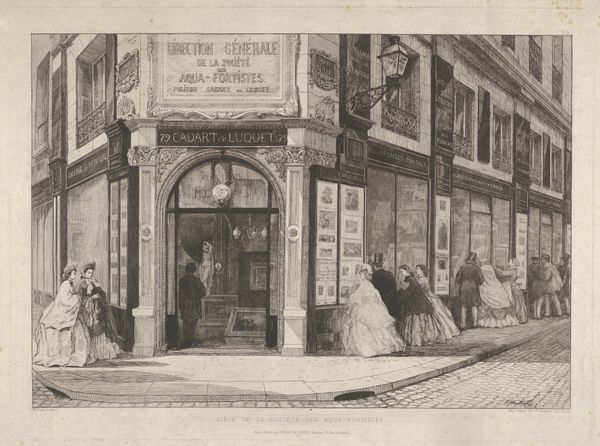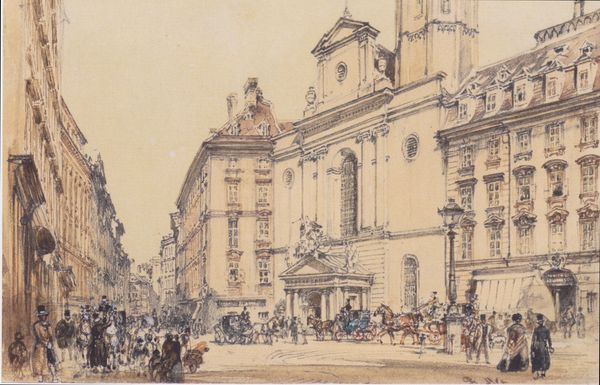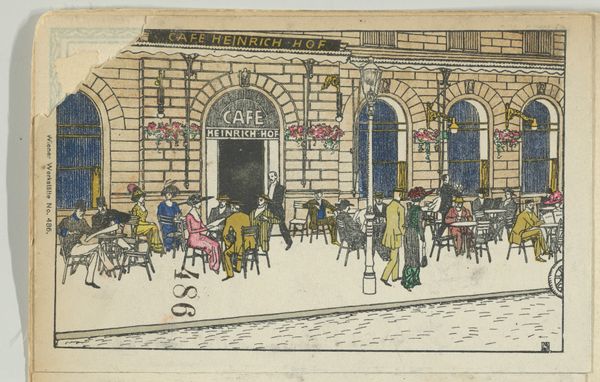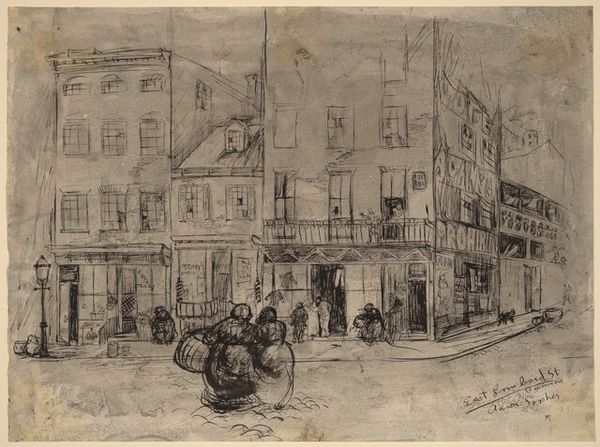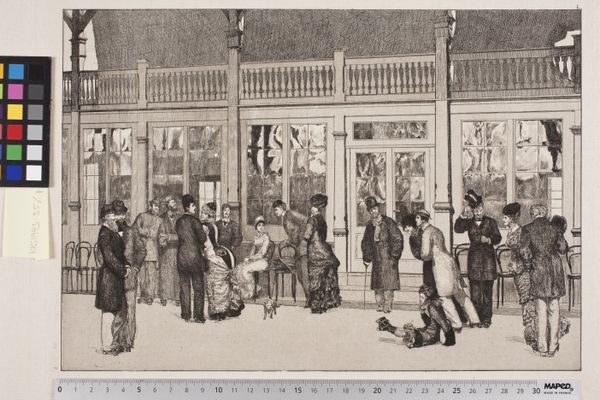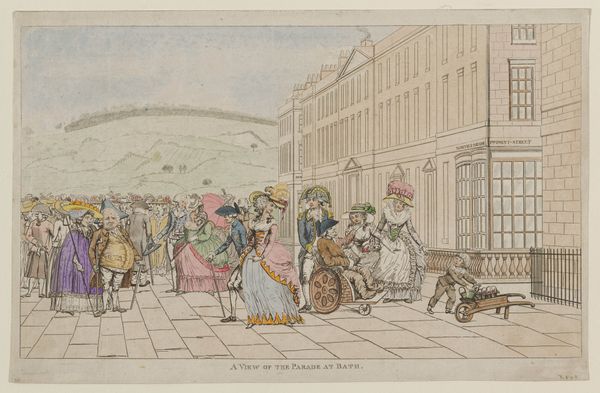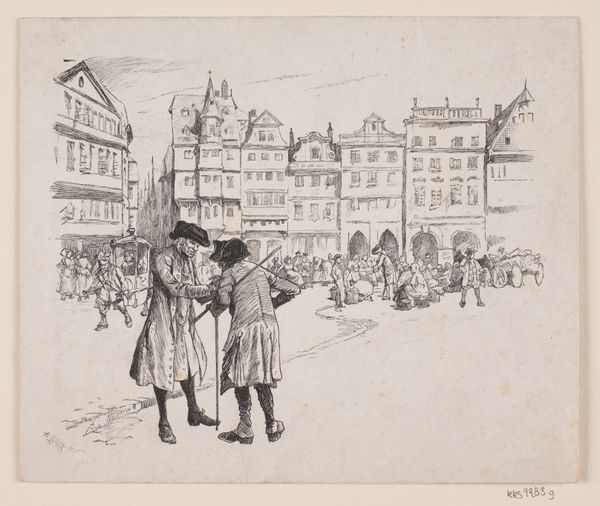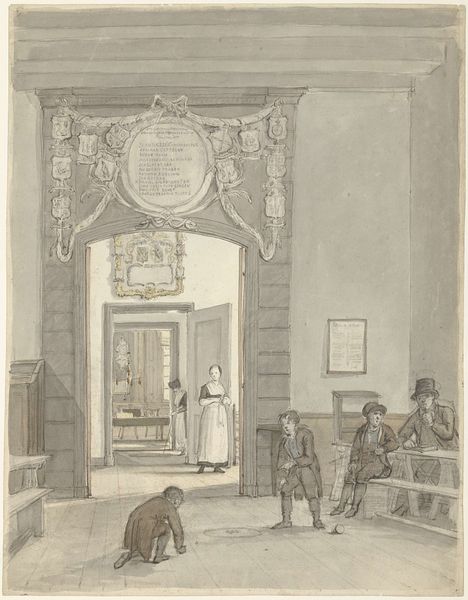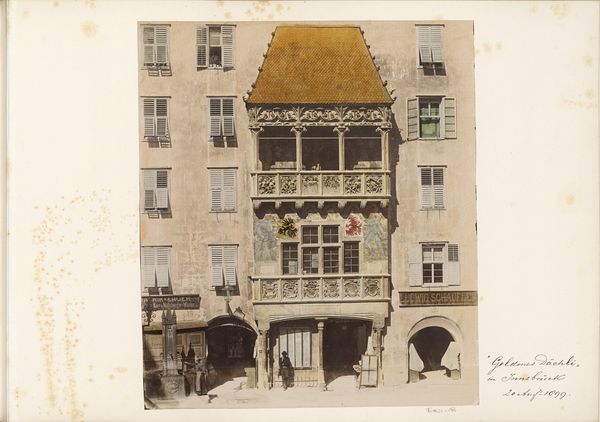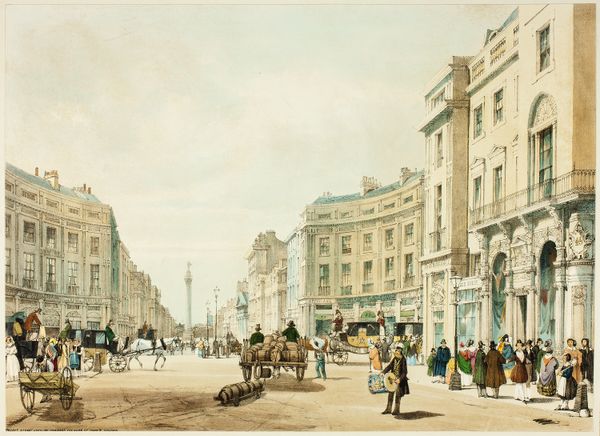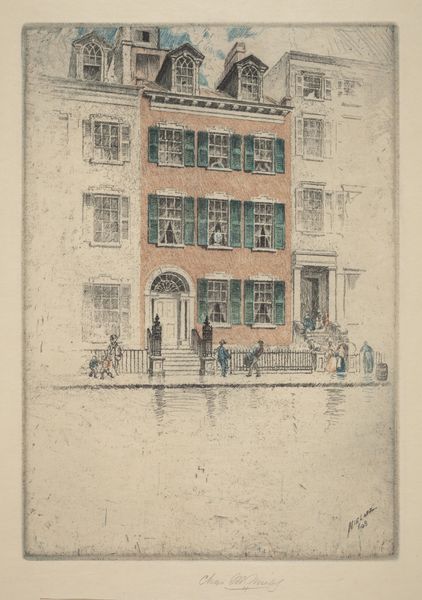
Dimensions: 40.31 x 32.28 cm
Copyright: Public domain
Editor: Enrico Nardi's "View of Palazzo Montecitorio with the obelisk of Psammetichus II," created in 1892 with watercolor and drawing on paper. I’m really drawn to the stark contrast between the meticulously detailed architecture and the soft, almost dreamlike quality of the watercolor. How do you read this piece? Curator: Formally, I see a dynamic interplay between structure and fluidity. Note the architectural precision in rendering the Palazzo – the sharp lines, the defined columns. Contrast this with the more gestural depiction of the figures and foliage, achieved through the watercolor medium. The linear perspective converges towards the Palazzo, creating a sense of depth. Does that hold your interest? Editor: It does. It's almost as if the building itself is the main character, firmly planted in reality. But the people seem… transient. What is the effect? Curator: Precisely. The solid geometric forms of the architecture establish a rigid framework. In contrast, the fluid watercolor creates a sense of movement and impermanence. Consider how Nardi juxtaposes these two elements; The obelisk, a symbol of permanence, further emphasizes the architecture’s immovability, in conversation with the temporality of human existence. Does it invite you to linger longer? Editor: Yes, I can really notice the relationship between architectural forms and watercolor. The interplay between structure and fluidity offers a richer understanding. Thank you! Curator: Indeed. Recognizing the significance of compositional elements can make a difference in decoding any painting.
Comments
No comments
Be the first to comment and join the conversation on the ultimate creative platform.
